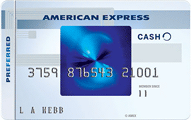What happens when you take the perfect combination of grocery purchases and fuel purchases, pair them with a circular reward program, double coupons, and then are able to maximize the reward program on your credit card? You get the Giant Eagle grocery store chain.
Giant Eagle is definitely not the cheapest guy in the market for gasoline or food purchases. However, once you learn to maximize the reward program, staying loyal to the brand pays itself back in dividends and convenience, breeding loyalty from the consumer.

Giant Eagle (GE) is a regional grocery chain servicing the Pennsylvania, Ohio, West Virginia and Maryland districts. In addition, GE offers gasoline via their GetGo stations. Introduced a few years ago, GE offers both a FuelPerks and FoodPerks reward program to the customers. The business model acted circular in that your gasoline purchases “fueled” your grocery discounts and your grocery purchases earned discounts off of gas. It was a smart planned that spurred loyalty in a tough and competitive grocery market.
Our family learned to exclusively fill up two vehicles at the various GetGo stations in the district. For every 10 gallons of gasoline we purchased, we would earn 1% back on food purchases. The percentage continued to build up in your account, and expired 2 months after the last day of the month they were earned.
Likewise, for every $50 spent at Giant Eagle locations, you earned $0.10 off per gallon of gasoline. So spending at one or the other always created a discount to use at the opposite. We used the program mostly for the benefit of discounted grocery purchases, and whatever discount we earned on gas was a bonus.
The great thing about purchases at Giant Eagle was that gift cards were allowed to earn rewards, and GE stocked practically every gift card imaginable. So if you had a gift of $50 and purchased a gift card for someone, you could also earn FuelPerks in addition to any benefits of purchasing with your selected credit card. With some creativity, you can start to see some of the benefits.
However, there were some downsides to the promotion.
1) Discounts had to be used in their entirety. So if you have $1.00 off per gallon saved up in FuelPerks, you had to apply the entire discount to your selected purchase and could not break it up into two transactions. The same thing went for FoodPerks. Where that became a problem was rewards earned in a month that were about to expire also caused you to use up any rewards that were recently earned.
2) While one could earn unlimited FoodPerks on your account, you could only redeem 20% on up to $300 in purchases. So if one purchased $400 in groceries, only the first $300 would be eligible for the 20% max discount.
So our family tended to have a pretty well oiled machine when it came to gas and grocery purchases. We only shopped for groceries at GE when our FoodPerks reached 20%, and only tended to buy stuff that was on sale and had double coupons. We could typically take a $400 grocery purchase and get it down to under $300 after applying double coupons first, and then FoodPerks discounts. Then we could usually earn around 5% off by using our credit card (or 6% if you had the American Express Blue Cash Preferred card).
For Giant Eagle, the combination of programs meant maximum savings for our family and low margins for them. However, GE also made a premium on us for gas purchases as well as the occasional splurge item. In addition, we were probably the exception rather than the rule for maximum savings.
However, this week our long-term game plan came with a drastic change. Via a friend, Giant Eagle grocery stores will be eliminating the FoodPerks program in its entirety on February 13, 2013.
So why do I bring any of this up? This offer is mostly regional and does not impact the overwhelming majority of our audience. However, what this represents is a classic example of having to constantly reevaluate how not only our family spends on groceries and gas, but also our spending habits and credit card spend.
With this change in the Giant Eagle rewards program, we have zero reason to ever purchase gas at their stations again, and therefore, we have no need to buy their groceries. Since GE prices are typically substantially higher, we can now continue to focus on buying in bulk at Costco, or some other local grocers.
Save Money, Travel More!



